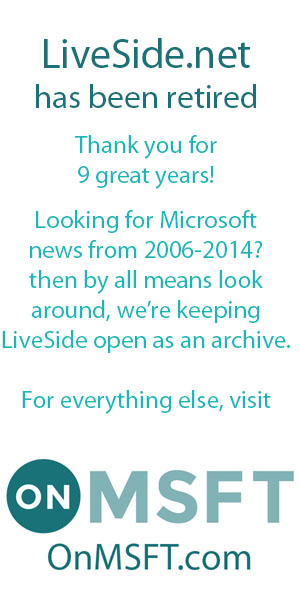Last week, after what has become a long sordid ordeal in trying to get a working YouTube app for Windows Phone, Microsoft tried again, releasing an updated app that it felt addressed Google’s concerns. Apparently not, as today, Google has technically blocked Microsoft’s app from working. Google issued a statement (reprinted from Mary Jo Foley’s post on the matter):
“We’re committed to providing users and creators with a great and consistent YouTube experience across devices, and we’ve been working with Microsoft to build a fully featured YouTube for Windows Phone app, based on HTML5. Unfortunately, Microsoft has not made the browser upgrades necessary to enable a fully-featured YouTube experience, and has instead re-released a YouTube app that violates our Terms of Service. It has been disabled. We value our broad developer community and therefore ask everyone to adhere to the same guidelines.”
We thought the line about making “the browser upgrades necessary to enable a fully-featured YouTube experience” was interesting and telling, and indeed, in a post on the Microsoft on the Issues blog, Deputy General Counsel for Microsoft David Howard lays out Microsoft’s stance and Google’s position:
There was one sticking point in the collaboration. Google asked us to transition our app to a new coding language – HTML5. This was an odd request since neither YouTube’s iPhone app nor its Android app are built on HTML5. Nevertheless, we dedicated significant engineering resources to examine the possibility. At the end of the day, experts from both companies recognized that building a YouTube app based on HTML5 would be technically difficult and time consuming, which is why we assume YouTube has not yet made the conversion for its iPhone and Android apps.
For this reason, we made a decision this week to publish our non-HTML5 app while committing to work with Google long-term on an app based on HTML5. We believe this approach delivers our customers a short term experience on par with the other platforms while putting us in the same position as Android and iOS in enabling an eventual transition to new technology. Google, however, has decided to block our mutual customers from accessing our new app.
It seems to us that Google’s reasons for blocking our app are manufactured so that we can’t give our users the same experience Android and iPhone users are getting. The roadblocks Google has set up are impossible to overcome, and they know it.
Somehow we doubt that Google has an “if you’re Microsoft, you have to use HTML5, otherwise, nevermind” clause in its Terms of Service (or at least, we didn’t see it), and as Howard says at the end of the post, “… it’s clear that Google just doesn’t want Windows Phone users to have the same experience as Android and Apple users, and that their objections are nothing other than excuses.”
However, it’s difficult to believe that Microsoft isn’t playing a few games of its own, here. First of all, and as Howard admits, Microsoft’s earlier rendition of its updated YouTube app was in clear violation of the ToS: it allowed video downloading, it scrubbed ads from the app, and allowed users to view reserved videos. Google was clearly within its bounds to object to the earlier app, and Microsoft didn’t do itself any favors by releasing it.
It also appears that, even though Google seems to be playing games with the HTML5 sticking point, some shenanigans were going on there, too. Google asked Microsoft to use HTML5. Microsoft looked into it, decided it wouldn’t work, and then published the app anyway. There doesn’t seem to be any indication that Google changed its mind on HTML5, or that Microsoft got approval to back away from the HTML5 requirement.
Howard also skims over “one problem with our new app”, not related to HTML5, that “it doesn’t always serve ads based on conditions imposed by content creators”. Howard blames this on Google, that it won’t provide the necessary information to deliver these ads correctly, but still, it released the app anyway.
As much as a requirement to use HTML5 appears to be gamesmanship by Google, it was a requirement, and Microsoft ignored it and published anyway. We’re not sure they left Google any choice but to pull the plug once again. Clearly, the two companies aren’t playing nice, and as Howard says, it’s the users who are suffering.

